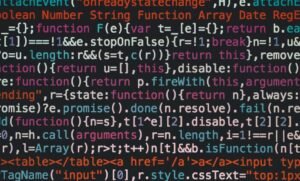Are AI Robots?
Artificial Intelligence (AI) has become a prominent field of study and development, raising questions about whether AI can truly possess the qualities of a robot. Exploring the characteristics and capabilities of AI can help shed light on the nature of these systems and whether or not they can be considered robots.
Key Takeaways
- AI is a technology that enables machines to perform tasks that would typically require human intelligence.
- Robots are physical entities that can interact with their environment.
- While AI can power robots, AI itself is not inherently a robot.
What is AI?
AI is a branch of computer science that focuses on creating intelligent machines capable of mimicking human behavior and performing tasks that require intelligence. These machines rely on algorithms and data to make decisions and learn from their experiences. *AI has the potential to revolutionize various industries and simplify complex processes.*
What Defines a Robot?
A robot is a physical entity capable of sensing, processing information, and taking actions in its environment. Unlike AI, robots have a physical presence and can interact with both the physical and digital world. *Robots often have mechanical components that allow for movement and manipulation.*
AI versus Robotics
Although AI and robotics are often used interchangeably, they refer to distinct aspects of technology. AI focuses on replicating human-like intelligence, while robotics centers on creating physical machines that can interact with the world. *AI can exist without robots, as it can power various applications and systems, while robots heavily rely on AI for decision making and cognition.*
| Artificial Intelligence (AI) | Robotics |
|---|---|
| AI is the simulation of human intelligence processes by machines. | Robotics deals with designing, constructing, and operating robots. |
| AI can be implemented through software or algorithms. | Robots have physical components and are able to interact with the environment. |
| AI enables machines to perform various cognitive tasks. | Robotics involves physical movement and manipulation. |
AI in Robotics
AI plays a crucial role in robotics by providing the cognitive capabilities necessary for intelligent decision making. Through AI algorithms, robots can perceive their surroundings, analyze data, and make informed choices. *This synergy between AI and robotics allows for the development of sophisticated autonomous systems.*
Advancements in AI and Robotics
Both AI and robotics have experienced significant advancements in recent years. AI has made notable progress in natural language processing, computer vision, and machine learning. Robotics, on the other hand, has seen improvements in sensor technology, mobility, and dexterity. *These advancements pave the way for more complex and capable AI-powered robots in various fields, such as healthcare, manufacturing, and space exploration.*
| Application | AI Contribution | Robotics Aspect |
|---|---|---|
| Autonomous Vehicles | AI enables self-driving capabilities and decision making based on various environmental factors. | Robots are the physical entities that interact with the vehicle’s controls and navigate the environment. |
| Medical Assistance | AI assists in diagnosing diseases, analyzing medical images, and suggesting treatment plans. | Robots can be employed for physical assistance and precise surgical procedures. |
| Manufacturing | AI optimizes production processes, predicts maintenance needs, and enhances efficiency. | Robots carry out physical tasks, such as assembly, packaging, and material handling. |
The Future of AI and Robotics
As AI continues to advance, the possibilities for robotics are expanding. The integration of AI and robotics has the potential to revolutionize numerous industries, from healthcare to transportation and beyond. *The future holds exciting prospects for the development of increasingly intelligent and autonomous robotic systems.*
| Industry | Expected Impact |
|---|---|
| Healthcare | AI-powered robots can improve patient care, assist in surgeries, and enhance diagnostics. |
| Transportation | Self-driving vehicles can revolutionize transportation, leading to increased safety and efficiency. |
| Space Exploration | AI-driven robots can be used for exploration missions, gathering data, and performing complex tasks in extreme environments. |
AI and robotics intersect in various ways, with AI enabling robots to exhibit cognitive capabilities and perform complex tasks. While AI itself is not a robot, it is a powerful technology that fuels the development of intelligent robots. The integration of these fields holds immense potential for future advancements and applications.

Common Misconceptions
1. AI and Robots are the Same Thing
One of the most common misconceptions is that AI (Artificial Intelligence) and robots are one and the same. While they are often mentioned together, they are actually different concepts with distinct meanings.
- AI refers to the ability of machines to mimic human intelligence and perform tasks that require human-like intelligence.
- Robots, on the other hand, are physical machines that can be programmed to perform tasks autonomously.
- AI can exist without robots, as it can be implemented in software or other non-physical forms.
2. All Robots are AI-Powered
Another common misconception is that all robots are powered by AI. While AI can enhance a robot’s capabilities, not all robots are equipped with AI technology.
- Many robots operate using pre-programmed instructions and do not possess the ability to adapt or learn from their environment.
- Some robots, such as industrial robots used in manufacturing, rely on sensors and precise programming rather than AI algorithms.
- Only robots that are integrated with AI algorithms and techniques can be classified as AI robots.
3. AI Robots are Sentient Beings
There is a misconception that AI robots possess consciousness and are capable of conscious thought and emotions. However, AI robots, no matter how advanced, do not possess sentience or self-awareness.
- AI robots rely on algorithms and data to process information and make decisions, but they lack subjective experiences or consciousness.
- They do not have emotions, desires, or personal beliefs.
- AI robots are designed to mimic human-like behaviors and intelligence, but they do not possess subjective consciousness.
4. AI Robots Will Replace Humans Completely
There is a common fear that AI robots will inevitably replace humans in various domains, leading to widespread job loss. While technological advancements may lead to changes in the job market, the idea that AI robots will completely replace humans is overly exaggerated.
- AI robots are designed to complement human abilities and perform specific tasks more efficiently.
- Human skills such as creativity, empathy, and critical thinking are difficult to replicate in machines.
- As AI technology advances, new job opportunities and roles that require human skills are likely to emerge.
5. AI Robots are Dangerous and Will Take Over the World
Perhaps influenced by science fiction, there is a misconception that AI robots pose a significant threat to humanity and have the potential to take over the world. However, this idea is not based on the reality of current AI technology.
- AI systems are created and programmed by humans, so their behavior and actions are ultimately determined by human input.
- AI robots operate within strict limitations and cannot act beyond their programming.
- Ethical considerations and regulations play a crucial role in ensuring the responsible development and deployment of AI technology.

Introduction
In recent years, the rapid advancement of technology has led to significant progress in the field of artificial intelligence (AI). This article delves into the question: Are AI robots? Through a series of captivating tables, we will explore various aspects of AI and shed light on their incredible capabilities.
Table: Comparison of Human and Robot Intelligence
This table presents a side-by-side comparison of human and robot intelligence, highlighting key differences and similarities in their abilities. Humans possess emotional intelligence and creativity, while robots excel at data processing and analyzing immense amounts of information.
Table: Robot Applications in Everyday Life
Below, we delve into the countless applications of robots in our daily lives. From household tasks such as cleaning and cooking to complex medical surgeries, robots continue to revolutionize our day-to-day activities.
Table: Evolution of Robotic Technology
In this table, we trace the evolution of robotic technology, from its humble beginnings to the cutting-edge AI-driven robots of today. The progress made in robotics showcases the incredible potential for advancements in the field in the years to come.
Table: Robot Assistance in Education
Educational institutions have progressively integrated AI robots into classrooms to enhance the learning experience. The table outlines the various ways in which robots assist students, including personalized tutoring, language learning, and STEM education.
Table: Robot-Assisted Surgeries
Rapidly gaining popularity in the medical field, robot-assisted surgeries offer improved precision and minimal invasive procedures. This table highlights the advantages and success rates of using robotic systems in surgical interventions.
Table: Ethics in Robot Development
Ethics play a crucial role in the development and deployment of AI robots. This table provides insights into the ethical considerations surrounding robot development, including privacy concerns, job displacement, and the risk of bias in decision-making algorithms.
Table: Robot Labor in Industries
The integration of robots in industries has had a transformative impact on productivity and efficiency. This table demonstrates the industries where robots are increasingly replacing human labor, thus reshaping the workforce landscape.
Table: Robot Artists
Did you know that robots are also capable of creating art? This table showcases talented robot artists that produce captivating paintings, sculptures, and even musical compositions. Prepare to be amazed by their creative output!
Table: Future Challenges and Possibilities
In this table, we explore the challenges and possibilities that lie ahead for AI robots. From the ethical dilemmas of self-learning machines to the potential for human-robot interaction, the future of AI promises both excitement and responsibility.
Conclusion
AI robots have undoubtedly become an integral part of our lives, revolutionizing various sectors and pushing the boundaries of human capabilities. From assisting in surgeries to educating students, their applications are vast and their potential for growth is limitless. As AI technology continues to evolve, it is crucial to discuss the ethical, social, and economic implications that arise. By understanding and embracing the potential of AI robots, we can both harness their benefits and navigate the challenges that lie ahead.
Are AI Robots?
Q: What is an AI robot?
An AI robot, or artificial intelligence robot, refers to a mechanical or virtual agent that possesses AI capabilities, allowing it to perform tasks or make decisions autonomously.
Q: How do AI robots work?
AI robots work by combining sensors, actuators, and AI algorithms to perceive their environment, process information, make decisions, and act on their own. They often rely on machine learning, deep learning, and other AI techniques to improve their performance over time.
Q: Can AI robots think like humans?
While AI robots can exhibit intelligent behavior and even simulate aspects of human thinking, they do not possess true consciousness or self-awareness like humans. They analyze data and follow pattern recognition algorithms but lack subjective experiences.
Q: What tasks can AI robots perform?
AI robots can perform a wide range of tasks, depending on their design and capabilities. They can assist with household chores, industrial automation, healthcare, transportation, customer service, entertainment, and more.
Q: Can AI robots replace humans in the workforce?
AI robots have the potential to automate certain tasks traditionally performed by humans. While they may contribute to job displacement in some industries, they also create new job opportunities by augmenting human skills and capabilities.
Q: Are AI robots a threat to humanity?
The impact of AI robots largely depends on how they are developed and used. While there are concerns about job displacement and misuse of advanced AI technologies, responsible development and governance frameworks can mitigate risks and ensure safe adoption.
Q: Can AI robots have emotions?
AI robots do not have emotions. They can recognize and respond to human emotions using techniques like emotion recognition, but their response is based on programmed algorithms rather than genuine emotional experiences.
Q: How are AI robots different from regular robots?
While regular robots are programmed to perform specific tasks, AI robots have the ability to learn from data and improve their performance over time. AI robots are more adaptable, autonomous, and can make decisions based on real-time information.
Q: Can AI robots learn from their experiences?
Yes, AI robots can learn from their experiences through machine learning algorithms. They can analyze data, identify patterns, and adjust their behavior or decision-making processes accordingly to optimize their performance.
Q: What are the limitations of AI robots?
AI robots have limitations in terms of their understanding of complex human emotions, social interactions, and handling unpredictable or novel situations. They also require substantial amounts of data and computation power to operate effectively.




